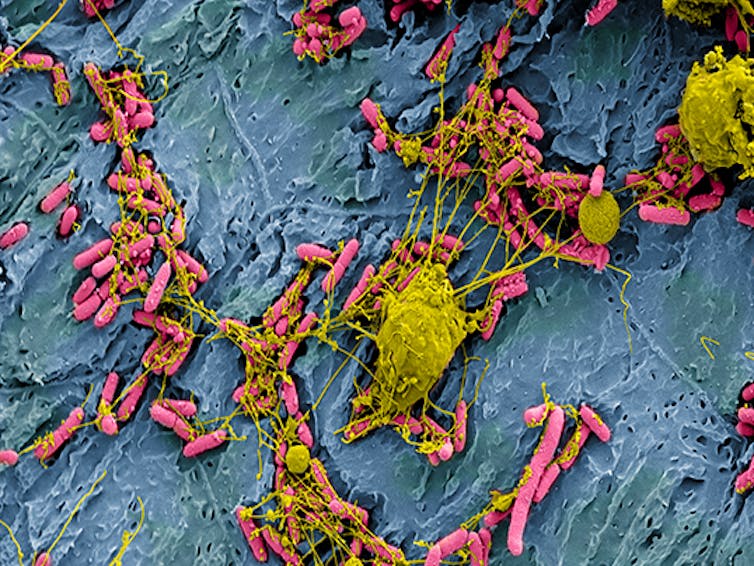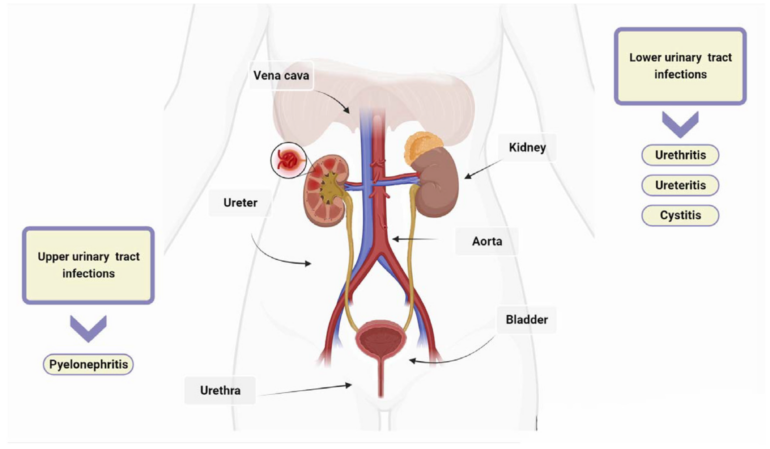Millions of people in the U.S. and around the world suffer from urinary tract infections every year. Some groups are especially prone to chronic UTIs, including women, older adults and some veterans.
These infections are typically treated with antibiotics, but overusing these drugs can make the microbes they target become resistant and reduce the medicines’ effectiveness.
To solve this problem of chronic UTIs and antibiotic resistance, we combined our expertise in microbiology and engineering to create a living material that houses a specific strain of beneficial E. coli. Our research shows that the “good” bacteria released from this biomaterial can compete with “bad” bacteria for nutrients and win, dramatically reducing the number of disease-causing microbes.
With further development, we believe this technique could help manage recurring UTIs that do not respond to antibiotics.
Bringing bacteria to the bladder
For the microbes living in people, nutrients are limited their presence varies between different parts of the body. Bacteria have to compete with other microbes and the host to acquire essential nutrients. By taking up available nutrients, beneficial bacteria can stop or slow the growth of harmful bacteria. When harmful bacteria are starved of important nutrients, they aren’t able to reach high enough numbers to cause disease.
Delivering beneficial bacteria to the bladder to prevent UTIs in challenging, though. For one, these helpful bacteria can naturally colonize only in people who are unable to fully empty their bladder, a condition called urinary retention. Even among these patients, how long these bacteria can colonize their bladders varies widely.
Current methods to deliver bacteria to the bladder are invasive and require repeated catheter insertion. Even when bacteria are successfully released into the bladder, urine will flush out these microbes because they cannot stick to the bladder wall.

This microscopy image shows the bladder of a mouse (blue) covered with E. coli (pink) and the white blood cells (yellow) attacking them.
Valerie O’Brien, Matthew Joens, Scott J. Hultgren, James A.J. Fitzpatrick, Washington University, St. Louis/NIH via Flickr, CC BY-NC
Biomaterials to treat UTIs
Since beneficial bacteria cannot attach to and survive in the bladder for long, we developed a biomaterial that could slowly release bacteria in the bladder over time.
Our biomaterial is composed of living E. coli embedded in a matrix structure made of gel. It resembles a piece of jelly about 500 times smaller than a drop of water and can release bacteria for up to two weeks in the bladder. By delivering the bacteria via biomaterial, we overcome the need for the bacteria to attach to the bladder to persist in the organ.
We tested our biomaterial by placing it in human urine in petri dishes and exposing it to bacterial pathogens that cause UTIs. Our results showed that when…



